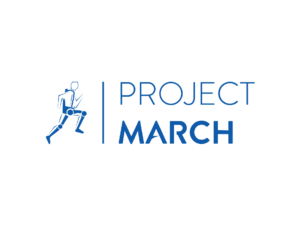Project MARCH is an initiative driven mostly by students at the Delft University of Technology in the Netherlands. The project is headquartered in the D:DREAM Hall on the campus. Every year, approximately 20 bachelors- and masters-level students voluntarily ‘park’ their studies for a year to devote themselves full-time to the project. They have a clearly expressed goal: to give back freedom of movement to people with spinal cord injuries, so they can take part in everyday activities and enjoy an improved quality of life. Every year, the students develop a new exoskeleton.
Project MARCH is a non-profit organisation. It is a longer-term project, comprised each year of a new team of devoted students from many university departments. They are given the opportunity to further improve on the skeleton and make it more compact and sophisticated. For an entire year, they elaborate further on the previous prototype, making careful use of the knowledge gained and lessons learnt in earlier years. They work closely with a ‘pilot’ – the person with a spinal injury who operates the exoskeleton and who has agreed to contribute to the skeleton’s development for a year. Such an agreement also ensures that the needs of patients are the primary focus. The project receives additional financial support from a range of partners, and a large number of collaborating partners contribute component parts or specific recommendations for the further development of the skeleton. One such arrangement is with Sint Maarten’s Clinic, which already has considerable knowledge and experience relating to exoskeletons and spinal cord injuries.
The project was first launched in 2015, and that laid the groundwork for the first functioning prototype. One year later was the first participation in the annual Cybathlon. During the 2017–2018 academic year, various innovations were added to the skeleton, including an active ankle, variable stride length and detachable supporting points for the lower leg. The current skeleton weighs about 25 kilograms and provides support for the lower part of the pilot’s body. The suit is powered by a battery on the back side, with an average operating time of about one hour, depending on the intensity of support. In the meantime, work is already underway on MARCH IV, the ambitions for which are gradually emerging: even more mobility for the user and the possible integration of additional sensors. The ultimate test will be at the next Cybathlon, where the new prototype will take up the challenge against other international teams. In the space of ten minutes, the pilots wearing exoskeletons are to successfully perform a range of everyday actions. In the previous year, MARCH III succeeded in winning the competition.
In addition to the practical benefits that people with spinal injuries reap from their expanded mobility, they also experience innumerable health improvements. The non-commercial approach embraced by Project MARCH allows more latitude for experimentation. There are no plans to put the exoskeleton on the market. “The purpose of the project is first and foremost to show that the technology exists,” stresses Jorick Kamphof, the project’s team manager. The skeleton can possibly be made smarter in the future, through improvements such as integrating various algorithms or controlling movement via specific brain signals, or by making the entire skeleton self-stabilising, enabling the pilot to perform a natural gait movement without crutches.
The exoskeleton is an important step towards a future in which wheelchairs will disappear from the streetscape. The ultimate goal is to make exoskeletons suitable and available to everyone whose mobility can be restored.

